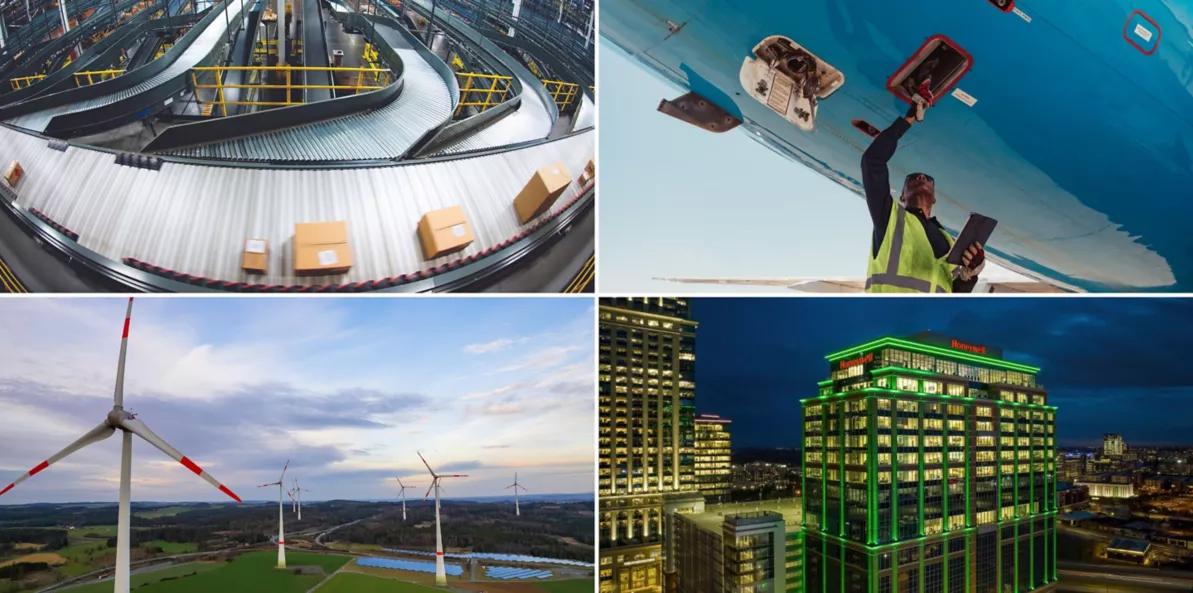
Honeywell technologies are set to play a pivotal role in mitigating climate change, with an estimated cumulative impact of reducing 2 billion metric tons of CO2e between 2023 and 2030. Here’s a detailed look at these innovations and their projected impact:
1. Methane Emissions Detection and Flare Monitoring
Honeywell has developed advanced technologies, including methane detectors and gas-cloud imaging cameras, to continuously monitor and pinpoint leaks of invisible, odorless gases such as methane. Given that methane is a potent greenhouse gas, addressing its emissions is crucial.
Projected Impact: These technologies are expected to mitigate 140 million metric tons of CO2e by 2030.
2. Sustainable Aviation Fuels (SAF) and Efficient Flight Management
The aviation industry faces significant challenges in reducing its carbon footprint. Honeywell’s flight management software enables more efficient flight routes, and its process technologies convert waste fats, oils, and greases into renewable fuels. Demonstrations have shown a 16% reduction in aviation emissions with this software.
Projected Impact: Honeywell’s advancements in sustainable aviation are projected to mitigate 270 million metric tons of CO2e by 2030.
3. Sustainable Building Technologies
Honeywell’s suite of building management systems, energy management software, and efficiency projects have been deployed in over 10 million buildings worldwide. These technologies help buildings operate more efficiently and optimize the occupant experience.
Projected Impact: Technologies for sustainable buildings are anticipated to mitigate 420 million metric tons of CO2e by 2030.
4. Carbon Capture, Utilization, and Sequestration (CCUS)
CCUS technologies capture CO2 emissions from industrial sources, preventing them from entering the atmosphere. Honeywell’s solutions in this area are essential for reducing industrial carbon footprints.
Projected Impact: These technologies are expected to mitigate 320 million metric tons of CO2e by 2030.
5. Industrial Automation
Honeywell’s industrial automation technologies enhance the efficiency of chemical processing, fuels production, pharmaceuticals, food and beverages, mining, and more. Automation reduces energy consumption and operational inefficiencies.
Projected Impact: Industrial automation technologies are projected to mitigate 200 million metric tons of CO2e by 2030.
6. Low Global Warming Potential (GWP) Refrigerants and Propellants
Honeywell’s Solstice line of products includes lower-GWP refrigerants, propellants, aerosols, blowing agents, and solvents. These products are critical for applications ranging from air conditioning systems to insulation materials, reducing the environmental impact of traditional high-GWP alternatives.
Projected Impact: The substitution of high-GWP fluorinated gases with Solstice products is expected to mitigate 600 million metric tons of CO2e by 2030.
7. Hydrogen Combustion
Hydrogen combustion technologies, when using hydrogen produced with renewable energy, emit only water vapor, making them a clean energy source. Honeywell’s hydrogen fuel cell systems, for instance, power unmanned aerial vehicles (UAVs) more efficiently than batteries or gasoline engines.
Projected Impact: Hydrogen combustion technologies are projected to mitigate 50 million metric tons of CO2e by 2030.
Conclusion
Honeywell’s innovative technologies across these seven key areas highlight the company’s commitment to sustainability and its significant role in addressing climate change. By 2030, these advancements are expected to contribute to a substantial reduction in global CO2e emissions, demonstrating the potential of technological innovation in creating a sustainable future.
For all your Honeywell product needs, please reach out to 6G Controls.
More HONEYWELL Products:
| HONEYWELL | 900RR0-0300 |
| 900A16-0103 | |
| 900R12R-0300 | |
| 51198685-100 SPS5710-2-LF | |
| HONEYWELL | 51304540-200 |
| HONEYWELL | 51198947-100 |
| HONEYWELL | 05701-A-0325 |
| 05701-A-0327 | |
| 05701-A-0302 | |
| 05701-A-0511 | |
| 51305418-100 | |
| CC-PAIH02 |
 6G Controls - Leading Supplier of New & Original PLC 、DCS Parts and Automation Controller
6G Controls - Leading Supplier of New & Original PLC 、DCS Parts and Automation Controller
